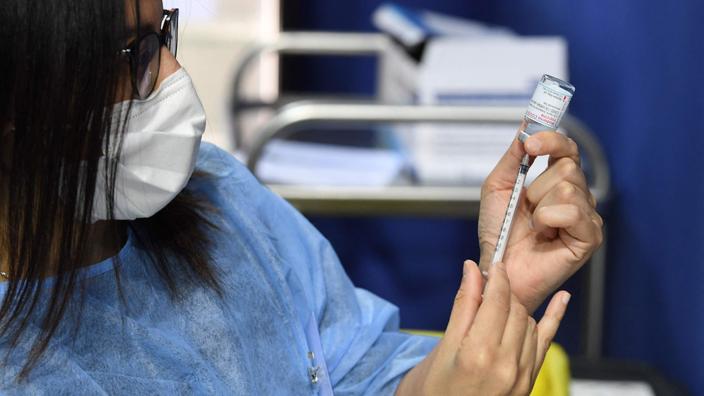Will France achieve its objectives of vaccinating 10 million people by mid-April, 20 million in mid-May and 30 million in mid-June?
While many departments are subject to reinforced measures in the face of the third wave of the epidemic, the delivery of vaccine doses remains a key issue, essential for the proper implementation of the vaccination campaign at the local level. .
Le Figaro
takes stock of this thorny issue, the data of which are constantly evolving according to the international situation.
Read also: Covid-19: are we able to vaccinate 10 million French people in mid-April?
According to cumulative data shared by the Ministry of Health, the Pfizer-BioNTech vaccine is popular in France: at the end of the month, more than eight million doses will have been received in France since the start of the vaccination campaign, at the end of December, against 2.8 million doses of AstraZeneca and just over 893,000 doses of Moderna.
The pace of deliveries should increase considerably from April, regularly remind members of the government.
What will generate an increase in the number of daily injections, if the logistics manage to hold out behind.
Laboratories have strengthened their production chains, boosting the number of doses received and expected between March and April, then between April and May.
However, some producers are far behind what was expected so far.
A quick comparison of the latest forecasts from the Directorate General of Health (DGS), dated March 23, with those drawn up in early January, reveals glaring differences in terms of doses delivered each month.
If Pfizer-BioNTech fulfills its contractual obligations and even exceeds initial forecasts, this situation is an exception.
AstraZeneca, in particular, is increasing the delays: at the end of June, the laboratory should have delivered 15.4 million doses, far from the objectives set at the beginning of the year.
A situation "
totally unacceptable
", for the French government, as well as for the European Union, which does not cease multiplying the warnings towards the group.
In the first half of the year, the laboratory should deliver 100 million doses to the Union, almost a third of what was provided for in the contracts, specified in mid-March the boss of the Commission, Ursula von der Leyen, during a press briefing.
Read also: Vaccines against Covid-19: latest info, calendar, appointments, side effects ...
By the summer, the DGS expects 41.1 million doses received from Pfizer-BioNTech, 15.4 million doses for AstraZeneca / Oxford, 8.1 million for Janssen / Johnson & Johnson and 6.7 million for Moderna.
If validated by health authorities, one million doses of the CureVac vaccine are also expected.
That is to say about 72.4 million doses received in total, a number which should make it possible to meet the objectives set by the executive.
Sanofi's vaccine is not expected before the fourth quarter of 2021.
The ramp-up of production chains should allow some players to partially catch up, towards the end of the first half of the year.
The fact remains that total deliveries are regularly revised downwards: a few weeks ago, the DGS hoped to have received, in March, 16.9 million cumulative doses since the start of the campaign, 32.1 million in April and 54, 3 million in May.
These figures have since been revised to 15.8, 27.9 and 45.6 million doses respectively.
Many unknowns remain, and weigh on the forecasts.
It is not yet known, for example, if and when the CureVac and Sputnik V vaccines will be validated by health authorities.

